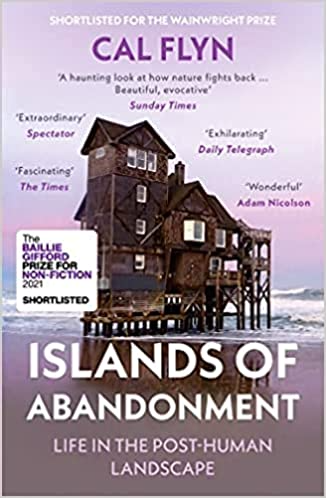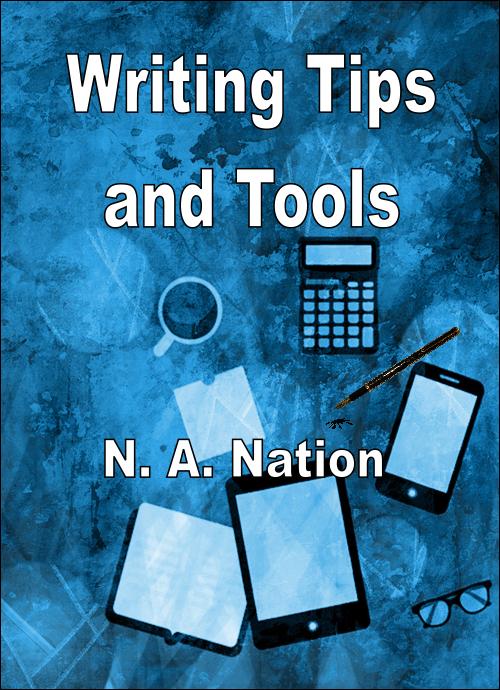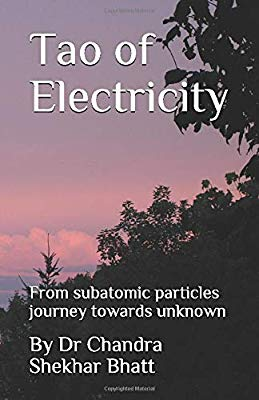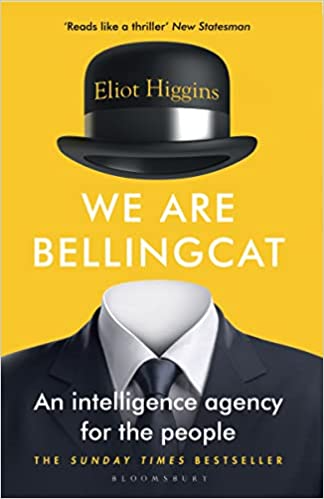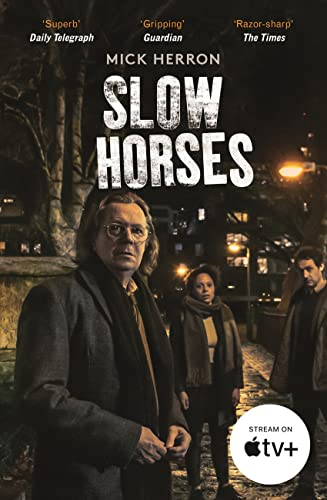Surrendering Control
Review by: Profile Editorial Team, 01/07/2022
Are we doomed?
Is humanity on an inevitable collision course with an Extinction Event which will wipe out our species? It seems hard to contemplate given the comfort of modern life – everything is so well organised, the sun keeps shining, surely the naysayers are overdoing it?
Islands of Abandonment by Cal Flyn doesn’t answer the question directly, but it provides so much food for thought that this reviewer is still thinking about the book days after setting it down. How often does that happen?
Whichever species eventually takes over from humanity might (possibly) find some of our writings, and may wonder at our ability to read the signs but keep on pressing ahead regardless.
Flyn has visited some of the strangest places on Earth – abandoned places, many of them scarred by former human occupation. Her journey combines optimism with a very real sense of alarm, and no little shame, at what we have done to our home. “When I have described my observations to friends, on return from my various journeys, some have challenged my focus upon the positives – on the remarkable ecological recoveries – and voiced doubts over whether in doing so I risk undermining the hard work of many tireless campaigners and lawmakers who have identified and prosecuted those who have damaged the environment in countless irrevocable ways. I think it’s important, therefore, to underline that in doing so I am not offering a free pass to those who wish to further pillage our planet. To me, these narratives of redemption offer something different: they are torches burning in a darkened landscape, beacons of hope in a world that sometimes feels bereft of it. They remind us of the power inherent in the world around us. And they are studies, too, of the benefits of sometimes surrendering control”.
That theme of surrendering control returns time and again, in stories of managed environmental remediation which didn’t deliver, and numerous examples of places where the simple absence of humans has resulted in dramatic, and sometimes wonderful, natural regeneration.
The writing is lyrical, easy on the ear, bordering on poetic in places. This is a personal account, very first person, and it’s impossible not to experience, for example, something of Flyn’s unease when she realises she might not be alone on a ‘deserted’ island, her joy at the diversity of the natural world, and her restless and adventurous spirit.
Flyn’s optimism comes through clearly, even in toxic, barren places. Many of the sites she visits have rebounded from human maltreatment, simply by virtue of being abandoned.
“We are in the midst of a huge, self-directed experiment in rewilding. Because abandonment is rewilding, in a very pure sense, as humans draw back and nature reclaims what once was hers. It has been taking place – is currently taking place – on a grand scale, while no one has been watching.”
For example, the Cold War gave us a 30 metre restricted area along the entire Inner German border– an 860 mile corridor which escaped the agricultural efforts on either side. “Over the forty-five years of its existence, this contested hinterland – much of which had previously been valuable farmland – was colonised by more than a thousand species from Germany’s ‘red list’ of endangered species.”
The fall of the Soviet Union, with its intensive collective agriculture, resulted in a vast quantity of rewilding. Flyn visits Estonia, which has seen tree cover grow from 21% of the country in 1920 to 54% by 2010 – 90% of this growth being natural regeneration. “One 2015 analysis of satellite images estimated at least 10 million hectares of forest regrowth in eastern Europe and European Russia alone – noting that only an estimated 14 per cent of the abandoned farmland had yet converted, thus raising the prospect of large-scale carbon sequestration well into the future.”
Another tantalising glimpse of the potential benefits of rewilding comes from the Black Death, which resulted in such high levels of depopulation that farmland was abandoned across Europe. “And it was the Black Death that first attracted Ruddiman’s attention. What he found interesting was the timing. Analysis of Antarctic ice cores (which store tiny bubbles trapped for thousands of years in an archive made of ice) demonstrate significant and unexplained drops in atmospheric carbon dioxide (an anomaly of around -5 to -10 parts per million) around the time of the Black Death pandemic. Ruddiman calculated that the drop could be accounted for, had 14 to 27 gigatonnes of carbon been extracted from the atmosphere and sequestered in new forests growing on the newly abandoned farmland.” Flyn raises the possibility that carbon sequestration in Europe following the Black Death, and in the Americas following colonisation by Western conquerors (which wiped out whole societies through disease) may have been one of the key factors in triggering the Little Ice Age which cooled large areas of the earth between the 16th and 19th centuries.
When these observations are combined with George Monbiot’s suggestions for a radical rethink of agriculture in Regenesis, we appear to have the makings of a routemap out of impending catastrophe. Except that our sins are not confined to habitat loss and global warming . . .
Flyn’s travels also take her to New Jersey, home to some truly terrifying chemical corruption of the landscape which will take centuries to mitigate. And on, to Verdun in France where chemical contamination from World War 1 still has the power to sterilise and make toxic swathes of land. And on she goes, to the Salton Sea in California, yet another blighted place, made toxic by man. And then there are the microplastics, now found at both Poles and in deep sea sediments . . . and on and on we go with our chemical adulteration of our home. Some of this can be transformed by nature within a generation or two, some of our chemical abuses may take centuries or even millennia to become safe.
This is such an easy book to recommend. It’s a page-turner – not common among non-fiction – written with an easy style which is - like all good smugglers – unobtrusive. Above all else I was filled with a desire to buy some land – the more worthless the better - and do nothing with it.
And back to the big question – are we doomed? Are we? Eventually, yes – something will wipe us out, hopefully a very long way into the future. The section on volcanoes, where Flyn wanders around the site of the active Montserrat volcano makes it very clear that – sooner or later – our species will lose everything.
Whether we can evade species suicide in the next few generations will depend on whether we can develop political systems which allow rational actions. The past few years have been politically chaotic, certainly in the West, which doesn’t bode well, though I share Flyn’s optimism for the regenerative power of Nature itself. Because without optimism, how will we ever summon the energy to save ourselves?
Also by Cal Flyn:
Posted in: non-fiction

